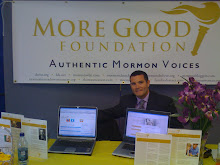
Safety Tips for Winter Storms
Winter storms in the form of freezing rain or sleet, ice, heavy snow or blizzards can be a serious hazard to people in may parts of the country. The first line of protection is to BE AWARE OF WEATHER CONDITIONS in your area.
By observing storm warnings, adequate preparation can be made to lessen the impact of hazardous weather conditions. To take full advantage of weather forecasts, learn and understand terms commonly used. | |
|
FREEZING RAIN AND FREEZING DRIZZLE indicates rain that freezes as it strikes the ground and other surfaces forming a coating of ice.
SLEET indicates small-particles of ice, usually mixed with rain. If enough sleet accumulates on the ground it will make travel hazardous.
SNOW, when used without a qualifying word, such as occasional or intermittent, indicates that a fall of snow is of a steady nature and will probably continue for several hours without let-up.
SNOW FLURRIES indicates periods of snow falling for short duration at intermittent periods. Accumulations are generally small.
WINTER STORM WATCH indicates severe winter weather conditions may affect your area (freezing rain, sleet, or heavy snow may occur either separately or in combination thereof).
WINTER STORM WARNING indicates that severe winter weather conditions are imminent.
HIGH WIND WATCH indicates sustained winds of at least 40 miles per hour, or gusts of at least 50 miles per hour or greater, are expected to last for at least one hour. (In some areas this means strong gusty winds occurring in shorter time periods.)
HEAVY SNOW WARNING indicates snowfalls of at least 4 inches in twenty-four hours are expected. (Heavy snow can mean lesser amounts where winter storms are infrequent.)
BLIZZARD WARNINGS are issued when sustained wind speeds of at least 35 miles per hour are accompanied by considerable falling and/or blowing snow. Visibility is dangerously restricted.
TRAVELERS' ADVISORIES are issued to indicate that falling, blowing, or drifting snow, freezing rain or drizzle, sleet, or strong winds may make driving difficult.
WIND CHILL is the effect of wind, in combination with actual temperature, which increases the rate of heat loss to the human body.
A winter storm could isolate you in your home for several days, Be prepared to be without electricity and conventional forms of heating and cooking.
Avoid all trips. If you must travel, use public transportation if possible. However, if you are forced to use your automobile for a trip of any distance, take these precautions:
CAR TROUBLE KEEP CALM IF YOU GET IN TROUBLE: If your car breaks down during a storm, or if you become stalled or lost, don't panic. Think the problem through, decide what is the safest and best thing to do, and then do it slowly and carefully. If a storm traps you on the road, pull off the highway, stay calm and remain in your car, where rescuers are most likely to find you. Set your directional lights to flashing, raise the hood of your car, or hang a cloth from the radio aerial or a car window. Then stay in your car and wait for help to arrive. Don't try to walk through a blizzard to safety. Getting lost can mean almost certain death.
| |






No comments:
Post a Comment